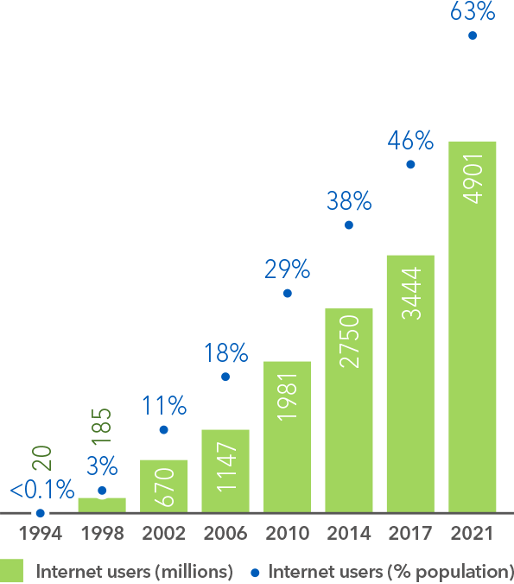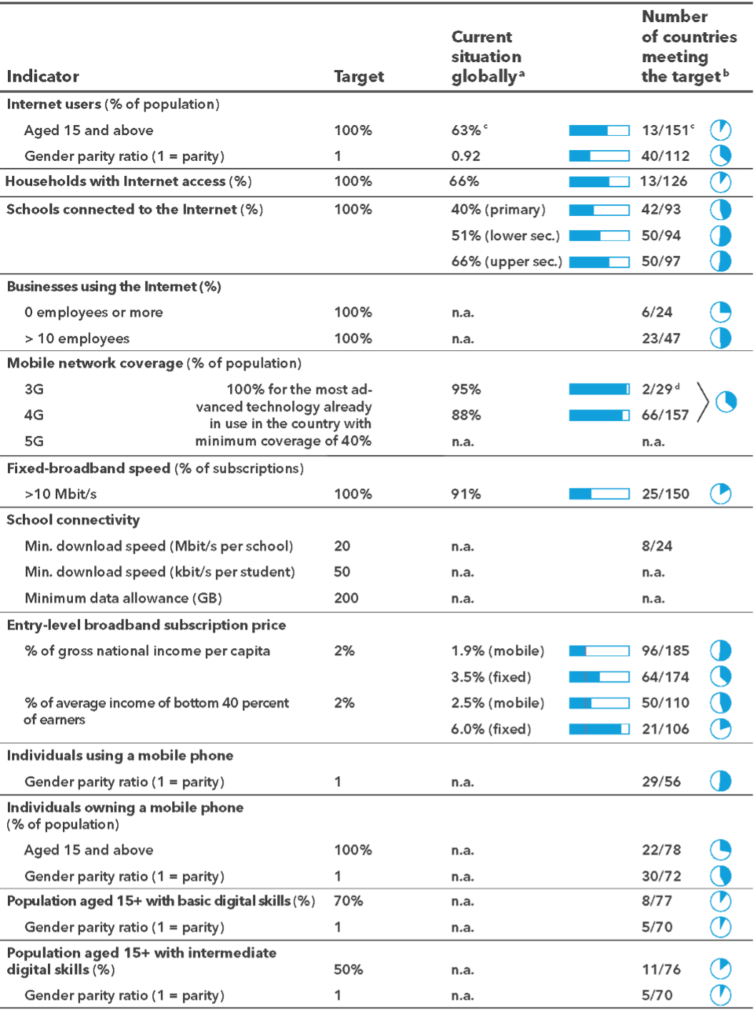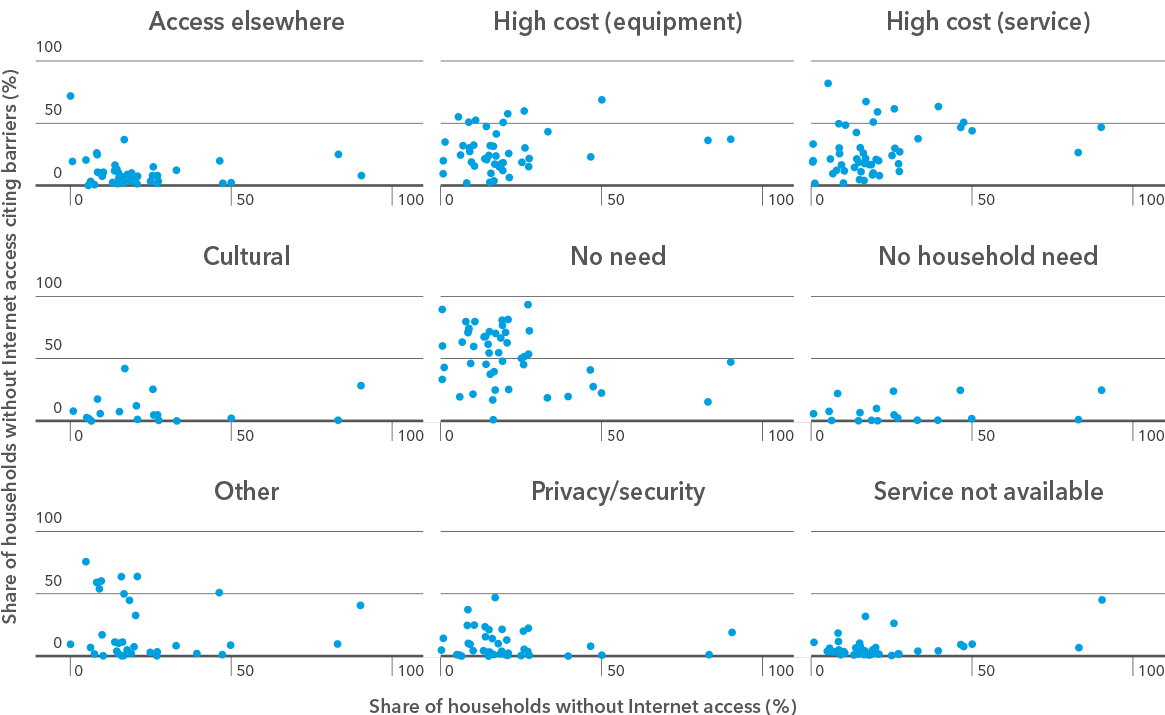Chapter 2 relies on the framework for universal and meaningful connectivity and the associated targets for 2030, developed by ITU and the Office of the Secretary-General’s Envoy on Technology, to analyse the current state of digital connectivity globally and progress towards reaching the targets by 2030.
Growth of Internet use between 1994 and 2021

Sources: ITU and UNDP
The framework considers usage by various stakeholders (universal dimension of connectivity) and the five enablers of connectivity (meaningful dimension of connectivity): infrastructure, device, affordability, skills, and safety and security.
The assessment reveals that the world is still far from universal and meaningful connectivity. Infrastructure needs to be rolled out or improved to bridge the coverage gap. There are still significant differences between and within countries in network availability and quality. Fixed broadband is a costly investment and is not available or is unaffordable for many. Mobile broadband offers greater flexibility and is less expensive, and most rely on this technology to go online. But in many rural areas of developing countries, only 3G is available, when meaningful connectivity requires 4G.
Aspirational targets for 2030 and the current situation

Notes: n.a. = not available (global situation cannot be assessed due to limited data coverage).
a: Data are either for 2021, 2020, or the latest year available in the last four years.
b: Among countries for which data is available. x/y means that in x out of y countries for which data are available the target has been achieved or almost achieved.
c: Percentage of total population instead of population aged 15 and above.
d: Number of countries where coverage of 4G has not reached 40 per cent of the population.
Sources: ITU; UNCTAD database (retrieved May 2022); UNESCO-UIS database (retrieved February 2022)
The coverage gap, currently at 5 per cent, is dwarfed by the usage gap: 32 per cent of people who are within range of a mobile broadband network and could therefore connect, remain offline. Data compiled by ITU make it possible to classify the offline population based on who they are and where they live. These data reveal five divides:
- Income divide: The level of Internet use in low-income countries (22 per cent) remains far below that of high-income countries, which are close to universal usage (91 per cent).
- Urban-rural divide: The share of Internet users is twice as high in urban areas as in rural areas.
- Gender divide: Globally, 62 per cent of men are using the Internet, compared with 57 per cent of women.
- Generation divide: In all regions, young people aged between 15 and 24 are more avid Internet users (71 per cent of them are online) than the rest of the population (57 per cent).
- Education divide: In nearly all countries where data are available, rates of Internet use are higher for those with more education, far higher in many cases.
Understanding why people and households do not use the Internet is critical for designing effective, targeted interventions. The main reasons cited by people for not using the Internet are the lack of affordability, of awareness about the Internet, of need, as well as the inability to use the Internet.
Connectivity barriers

Source: ITU
Globally, connectivity became more expensive in 2021 due to the global economic downturn triggered by the COVID-19 pandemic. After years of steady decline, the share of income spent on telecommunication and Internet services increased in 2021. The global median price of an entry-level broadband plan in the majority of countries amounts to more than 2 per cent of the gross national income per capita, which is the affordability threshold set by the Broadband Commission for Sustainable Development.
People should not be forced to use the Internet. However, evidence suggests that introducing people to the Internet usually entices them to stay online. Based on activities people reported, use of the Internet leads to an improved social life, with the use of social networks, making Internet calls and streaming video the most common activities.
Beyond awareness about the merits of the Internet, making meaningful use of it requires specific skills. In the countries where data are available, they suggest that many people, sometimes the majority, do not have such skills.